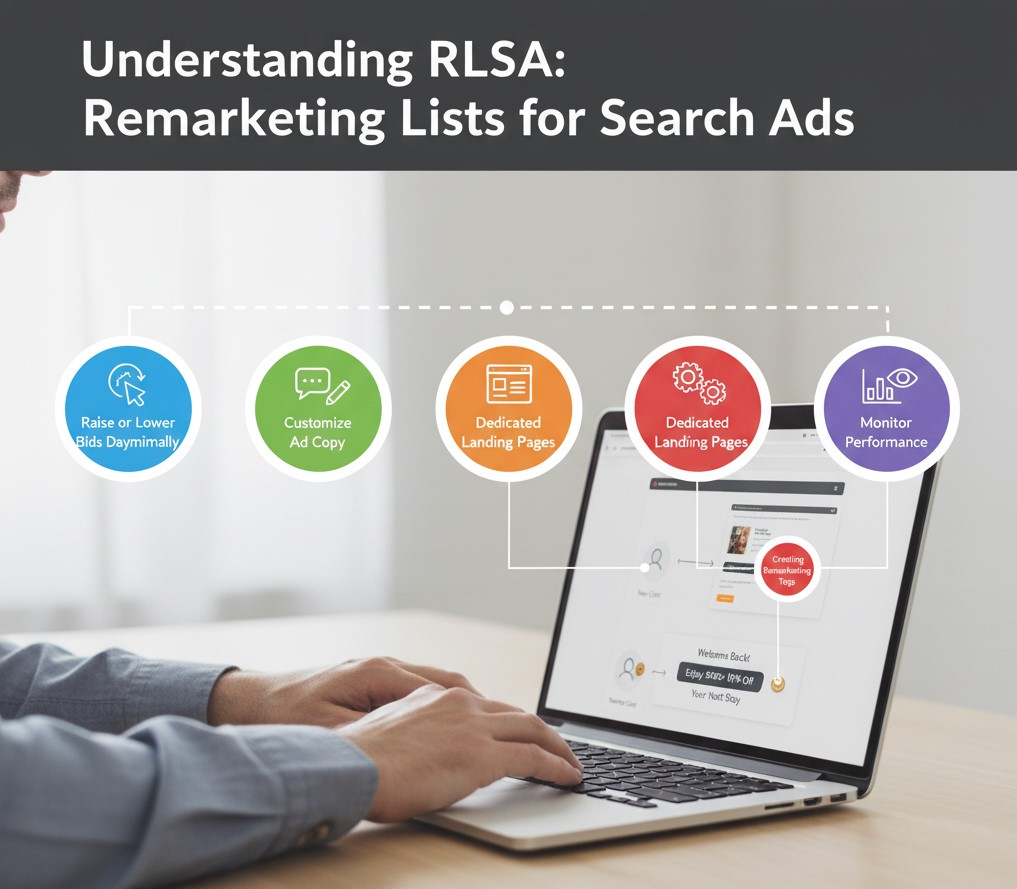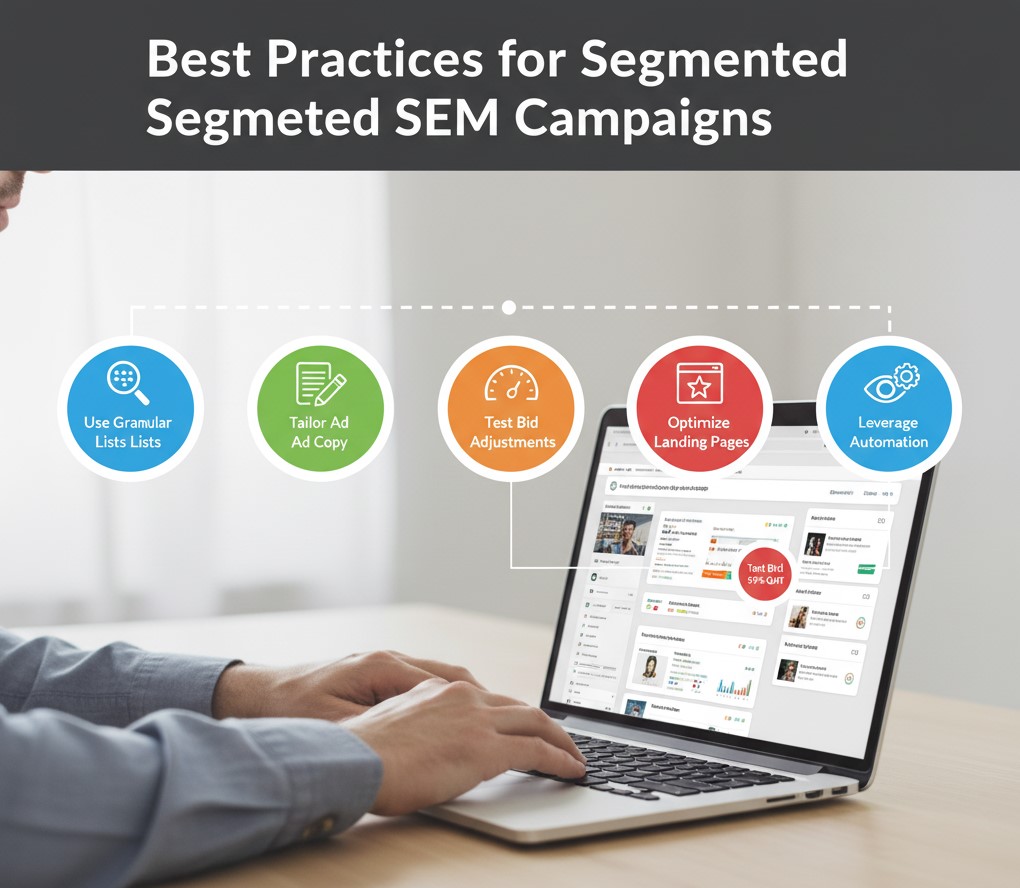
In today’s competitive digital landscape, generic search engine marketing (SEM) campaigns can quickly drain budgets and fail to deliver meaningful results. Advanced audience segmentation transforms your SEM strategy by zeroing in on users most likely to convert. This comprehensive guide dives into two powerful techniques—Remarketing Lists for Search Ads (RLSA) and Custom Intent Audiences—to help you tailor bids, ads, and landing pages for maximum impact.
Why Audience Segmentation Matters in SEM
Effective audience segmentation enables you to allocate budget more efficiently and craft messaging that resonates with each user cohort. Instead of bidding the same amount and showing identical ads to every searcher, segmentation empowers you to:
- Increase bids on high-value prospects who have already engaged with your brand
- Serve tailored ad copy that addresses specific intent signals
- Reduce waste by excluding low-intent or irrelevant audiences
By leveraging RLSA and custom intent, you target audiences with precision and drive higher click-through rates (CTRs), lower cost per acquisition (CPA), and superior return on ad spend (ROAS).
Understanding RLSA: Remarketing Lists for Search Ads

Remarketing Lists for Search Ads (RLSA) lets you adjust your SEM campaigns based on past user behavior on your website or app. Visitors who landed on key pages—like product pages or pricing—are added to a remarketing list. When these users perform a new search on Google, you can:
- Raise or lower bids dynamically
- Customize ad copy to reference their prior interaction
- Experiment with dedicated landing pages for returning visitors
Setting up RLSA involves:
- Creating remarketing tags in Google Ads or importing audiences from Google Analytics
- Defining list membership conditions (e.g., users who viewed a specific URL)
- Applying the audience to relevant campaigns or ad groups
Once live, monitor performance by comparing metrics for the RLSA audience against everyone else. Look for improved CTRs and conversion rates to validate your segmentation.
Harnessing Custom Intent Audiences
Custom intent audiences allow advertisers to target users based on keywords and URLs that reflect purchase intent—even if those users haven’t visited your site yet. Unlike traditional keyword targeting, custom intent taps into Google’s machine learning to identify users researching products or services like yours across the Google Display Network and YouTube.
Key steps to create custom intent audiences:
- Define 5–10 high-value keywords that indicate strong purchase intent
- List competitor URLs or relevant content hubs your ideal customers frequent
- Set up the audience in Google Ads under “Audiences > Browse > What they are actively researching or planning”
By combining keyword signals with behavioral data, custom intent audiences help you reach prospects at the right moment—often earlier in the buying journey than RLSA lists.
Combining RLSA and Custom Intent for Maximum Lift
The real magic happens when you layer RLSA and custom intent audiences within the same campaign. Consider a two-tier approach:
- Tier 1: Custom intent targeting to capture new prospects exhibiting research behavior
- Tier 2: RLSA targeting to re-engage site visitors who didn’t convert on the first visit
Allocate a higher budget share to your RLSA segment to capitalize on their elevated intent. Simultaneously, maintain a test budget for custom intent to continually expand your funnel. This hybrid model drives scale while safeguarding ROI.
Best Practices for Segmented SEM Campaigns

To ensure your segmentation strategy thrives, follow these guidelines:
- Use Granular Lists: Break down audiences by behavior (e.g., cart abandoners vs. repeat visitors).
- Tailor Ad Copy: Address each audience’s unique pain points and value propositions.
- Test Bid Adjustments: Experiment with +10%, +25% or more on high-value lists; reduce bids on low-intent groups.
- Optimize Landing Pages: Serve dynamic headlines or offers that reflect prior browsing history.
- Monitor Frequency: Avoid ad fatigue by controlling how often returning users see your ads.
- Leverage Automation: Use Smart Bidding strategies like Target CPA within each audience segment.
Measuring Success and Iterating
Robust reporting is crucial. Segment your performance data by audience to uncover insights such as:
- Conversion Rate Lift: RLSA lists should outperform generic searchers.
- Cost Efficiency: Custom intent may have higher CPCs but yield new customer acquisitions.
- Lifetime Value Impact: Track post-conversion metrics to justify higher bids on premium segments.
Regularly refresh your lists (e.g., every 30–90 days) and refine keywords for custom intent to keep your segments current and high performing.
Common Pitfalls and How to Avoid Them
Even veteran SEM pros can stumble. Watch out for:
- Overlapping Audiences: Exclude RLSA lists from generic campaigns to prevent internal bidding wars.
- Small List Sizes: Ensure lists meet Google’s minimum thresholds (often 1,000 active users).
- Static Strategies: Audiences change over time—don’t set and forget.
- Fragmented Reporting: Use UTM parameters and custom segments in Analytics for end-to-end visibility.
Conclusion
Advanced audience segmentation with RLSA and custom intent audiences elevates your SEM performance by delivering highly relevant ads precisely when prospects are ready to buy. By layering these tactics, tailoring bids and creative, and rigorously measuring outcomes, you can achieve sustainable ROI growth and outpace competitors. Begin implementing these strategies in your next campaign cycle and unlock the full potential of segmented SEM.
Ready to transform your SEM results? Start building granular remarketing lists and custom intent segments today, and watch your conversions soar.
Learn more about: How to Master Google Performance Max Campaigns for Maximum SEM ROI


Leave a Reply